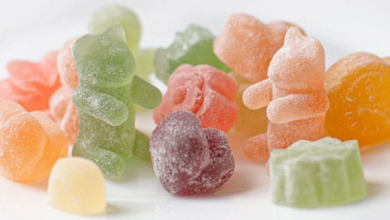7 Hidden Facts to Know About Antibody Production

B cells’ primary role in the immune system is the generation of antibodies. Antibodies play a crucial role in the immune response by identifying and attaching to antigens, such as bacteria or viruses, and aiding in their elimination.
Producing antibodies: what exactly is that? The process of making antibodies can refer to a wide variety of phenomena. It encompasses all the steps necessary to make a specific antibody. That includes; making the immunogen, giving the vaccination, making the hybridoma, testing it, and purifying it. Antibody production, in this narrower definition, refers only to making antibodies. As Recombinant Antibody Service has advanced, many options have become available. Hybridoma cells are used to create monoclonal antibodies in a laboratory setting.
- Antibodies, proteins in the shape of a Y, are produced in high quantities by the immune system.
While there are many other types of antibodies, the Y-shaped proteins known as IgG antibodies are the most common (immunoglobulin G). At the very tips of the Y’s, two upper arms are identical binding sites that have been fine-tuned to bind to a specific foreign protein. The binding sites are also referred to as the variable domains since the tips of various antibodies are tailored to neutralize specific threats. Antigens are any foreign proteins that trigger an immune response.
All IgG antibodies have the same Y-shaped foundation. The Fc region is so named because it interacts with the Fc receptors on many other types of immune cells, unleashing a more widespread attack against the external threats detected by antibodies. When the immune system begins producing antibodies, it produces a large quantity. About 2,000 antibodies are produced by each of our immunological B cells every second.
- Antibodies work through a principle known as shape complementarity.
In the same way that a key will only open a lock if its shape is compatible with the tumblers inside, an antibody will only attach strongly to an antigen if the two have similar geometrical features. The real mystery is how immune system produces antibodies to fight against the wide variety of strangely shaped foreign proteins found in the bacteria we meet daily. The answer is that our bodies contain trillions of lymphocytes—mostly B cells and T cells—each of which is equipped with a differently shaped receptor.
An organ the size of the brain or the liver might be formed from these cells. But instead, they’re dispersed throughout the body, including the bone marrow, spleen, and lymph nodes, where they can quickly detect and respond to foreign invaders, allowing us to mount an effective defense. The production of antibodies results from the immunological response triggered when these receptors attach to a foreign antigen.
In the case of SARS-CoV-2, for instance, the immune system does not “predict” infection. Instead, it makes a wide variety of B and T cell receptors to be as thorough as possible. It’s similar to buying lottery tickets for every possible combination to guarantee a win in the state lottery. And if that sounds unbelievable, well, it is.
- The B cell has a mechanism that increases the binding power of antibodies.

Why does it take so long to produce high-quality antibodies against diseases like coronavirus? One possible explanation is that B cells are extremely picky and seek only the highest-quality antibodies. The difficulty arises from the fact that there may be as many as a trillion unique B cells but an infinite number of potential foreign protein forms to defend against. Therefore, the match between an activated B cell and its target antigen is probably good but not perfect.
When the B cell starts replicating to make clones of itself, however, random mutations in its DNA cause the cloned cells to manufacture antibodies similar to but distinct from those produced by the parent cell. B cells, with the help of T cells, can multiply and produce millions of variants of the same antibody receptor. The original antigen will be bound by several novel receptors but with varying affinities. The one that binds most effectively will spread widely since it is constantly being turned on.
As the term implies, Affinity maturation can increase antibodies’ binding strength by more than a factor of a thousand. This perfect match is indicative of a high-quality antibody, yet it is not sufficient for success on its own.
- Where in the body do antibodies originate?
B cells are responsible for producing antibodies (specialized white blood cells). After being exposed to an antigen, B cells replicate and clone. Millions of antibodies are discharged into your blood and lymph system from these cloned B cells, also known as plasma cells.
Your body stores antibodies in several places, including skin, lungs, tears, saliva, and even breast milk. Colostrum contains many protective antibodies (a thick fluid secreted by the breasts for a few days after giving birth). This is why breastfeeding (chest feeding) can help strengthen your child’s defenses.
- Antibodies are not created equal.
How well an antibody binds to its target is just as important as how tightly it binds to protect the body from viruses and other dangers. It’s not like our immune system is smart and knows beforehand just what antibodies to generate. It just generates whatever antibodies it can against whatever viral antigens it can detect.
Consequently, there may be thousands of unique antibodies, each of which binds to a different virus protein or variant of the same protein. While some of these antibodies may not affect the virus, others may impede the virus’ ability to use specific proteins, like the spike protein, to infect host cells with the coronavirus. Neutralizing antibodies are those that prevent further infection within a cell.
The significance of antibodies is not limited to those that can prevent illnesses directly. If an object is covered in antibodies, the body’s innate immune system will treat it as foreign. Macrophages, part of the innate immune system, “eat” (phagocytose) and digest antigens coated with antibodies.
- Production Schedule for Antibody Drugs
The production of antibody therapeutics is a lengthy and intricate procedure. It takes around a year from when a genetic code is delivered to cells as an instruction manual for producing the antibody until the drug is available to distribute to patients. It takes roughly three to four months from the time a vial is thawed out of a cell bank, and the production procedure begins until the finished drug is ready when an existing antibody is used.
- Identical Antibodies, Identical Cells
The phrase “monoclonal antibody” refers to an antibody produced by a single, identical cell line. Similar antibodies are produced by these identical cells, making them ideal for drug development.
Final Thought
Although natural antibodies were first identified almost fifty years ago, there is still much we do not understand about them. Their diversity and their role in the body are still being explored. The primary function of these substances is to shield the human body from harm when we are born. They maintain tissue homeostasis by responding to self-antigens and neo-determinants generated during processes like oxidation and apoptosis.




